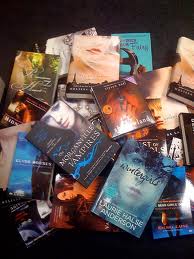What’s the hardest part about being a novelist?
For most people, at least according to the all-knowing Internet, the hardest part about being a writer isn’t coming up with good ideas, having the determination and patience to finish a book, going through the painstaking process of editing, or even finding a publisher. No, most novelists agree that the hardest part about being an author is…
Marketing.
Yep. In today’s world, even very successful authors with top publishing houses are expected to do a significant amount of work in marketing their books. You can find hundreds of articles and blog posts about how important it is to have an online platform and get the word out about your writing. Even the best book in the world, after all, won’t sell if no one knows it exists.
What many writers aren’t aware of, however, is something that I’ve learned as a Ph.D. student in – you guessed it – marketing. And that’s the importance of, and how to create, a personal brand. That is, a brand for you as a writer.
For those of you who haven’t taken a marketing class in a long time (yes – “never” is a long time), a brand is far more than a label on a soup-can. According to the textbook that I’m currently teaching from, a brand is “a name, term, sign, symbol, or design, or a combination of these, that identifies the products or services of one seller or group of sellers and differentiates them from those of competitors” (Armstrong and Kotler 2013).
The two key points here are that the brand identifies what you’re selling, and that it differentiates what you’re selling. If you have a brand that does this, it will have what’s known as brand equity, or value. For a writer, brand equity means that your readers will understand what your books are typically like, how they’re different from other people’s books, and – most importantly – they’ll be more likely to purchase your book if they know that you wrote it, and they’ll pay more for your book than they would for a book with an equivalent title, plot, and cover design if it were written by someone else.
So how do you get a powerful brand with lots of brand equity? Well, we can start with the easy part. For any author, just like for any public figure or celebrity, your brand is going to be your name/pseudonym. Unless you happen to have a very common name, or share a name with a famous author, it won’t be hard to use that brand to identify what you’re selling. There aren’t any other A.L. Phillips’s out there who write books. (There is, unfortunately, an “Al Phillips” who runs a cleaning business, and eats up my Google results. However, people are unlikely to confuse our services.)
The more difficult part of branding is getting your name – and thus people’s perceptions of your writing – to be seen as different from what your competitors offer.

But how do you do it?
This is where having a bit of marketing knowledge comes in. The fundamental thing your brand needs to communicate is what unique value or benefit your customers (your readers) will gain from the goods/services you offer. For writers, this means that you have to consider who your target market is, and what common threads tie over across your books that will appeal to this market.
For instance, do you appeal to the hard sci-fi crowd who want books that are technically accurate and plausible? Are your books targeted at Anglophiles who love the grandeur and culture of Regency England? Do you target middle grade readers who need a fast-paced story, readers who want a “clean” book without cursing or adult material, or lovers of historical romance? Is your writing funny, gritty, beautiful, fast-paced, well-researched, honest, down-to-earth, or something else yet? The most successful brands are those that carry value across specific products – in a writer’s case, across specific books that he/she has written.
In my case, I write clean fantasy and science fiction stories that stem from a love of culture and sociology. There’s a lot besides those elements that goes into successful writing, of course. Round characters, technical accuracy, gripping plots, etc. are all necessary, but those wouldn’t distinguish my books from any other good books on the market. When I advertise my writing, I say that it’s important to me that my worlds, no matter how fantastical, have to be well thought out and feel real. I also say that it’s important that advanced pre-teen readers (or adults who prefer clean books) should be able to read good, rich stories written at a high reading level, yet still without inappropriate content. Knowing those things about my books helps potential readers know more about what they’re getting into, and gives them an assurance that future books I write will also follow this mold.
The classic way to formalize this unique value that you offer, and to wrap your own head around it better, is to create a brand position statement, or a value proposition statement. This generally follows the format of, “For [my target market], [my brand name] is a [product category] that [unique point of difference].” In my case, restating the paragraph above, “For young and adult readers alike, A.L. Phillips offers entertaining, clean adventures set in culturally rich, realistic fantasy and science fiction worlds.” Writing a brand position statement will help you tell other people what you do, and will also help you focus on what you do best.
The next part of developing your personal brand – and marketing it – is to conduct a SWOT analysis. Standing for Strengths, Weaknesses, Opportunities, and Threats, a SWOT analysis is a classic business approach for understanding what a company/brand/individual does well, struggles with, what external factors are helping it/him/her, and what external factors the company/brand/individual needs to carefully monitor and be aware of. While a brand position statement is for everyone to see, your SWOT analysis is a way of helping you better understand who you are and how you fit into the larger market of writers. By understanding what you do well (and can focus on), what you do poorly (and should make allowances for, try to improve, or subcontract out), what opportunities you can take advantage of (for instance, local community events that you can be a part of, a market trend toward self-publishing or small-press publishing, or increased interest in young adult books), and what potential outside threats loom (for instance, increased competition, a bad market, decreased interest in vampire/werewolf books), you can plan for your brand’s future and maximize your chances of success.
A more detailed brand analysis would include identifying all of the common attributes that successful products in your area share that you need to have (e.g. strong characters, a good plot, good editing), describing your competitors’ brands, identifying what they’re uniquely good at and how they’re positioned, talking about how you’re distinct from these major players in the market, and so forth. But this is enough to get you started on creating a brand that is identifiable and differentiates you to your audience as the unique provider of value that you are. Good luck, and happy marketing!
If you’ve created a brand position statement that you’d like to share, or if you have questions or comments, leave a note below!
